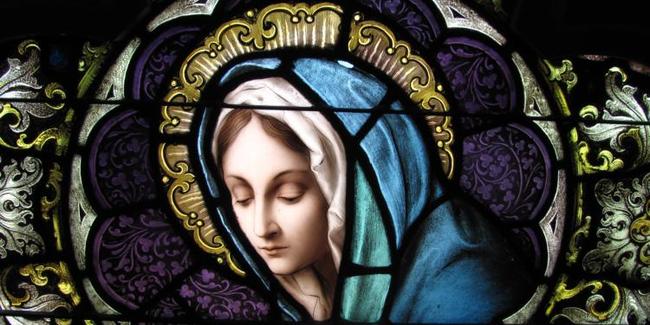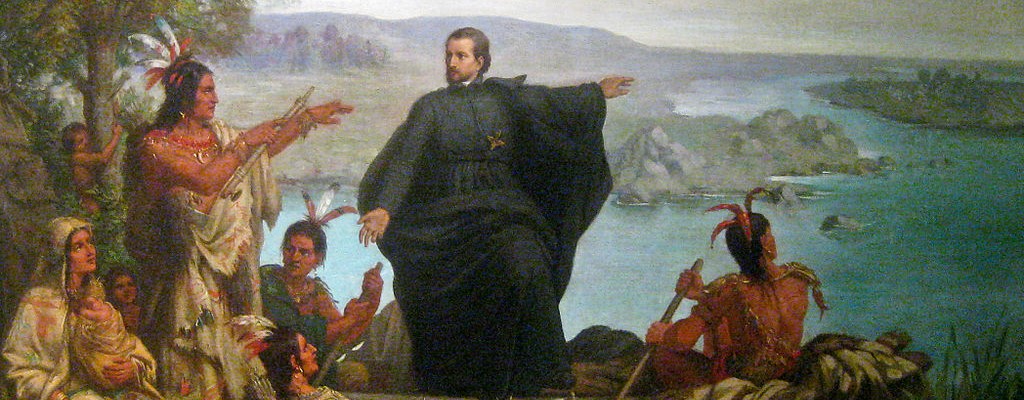A Corona Worth Spreading
On May the 17th, in the year of Our Lord 1846, Our Lady of the Immaculate Conception was proclaimed the principal patroness of the United States of America.

But it is sadly questionable whether contemporary American Catholics have taken that proclamation to heart. To be sure, the feast is duly listed on our liturgical calendars, but how deeply has it entered our folklore and our culture? Does it have the popular presence that La Guadalupana has in Mexico? Or even Lucia in Protestant Sweden? Our non-Catholic countrymen are probably not even aware that we have a patronal feast that day. And that is our shame, not theirs–for we apparently have not shown enough interest in it to attract much notice.
We also find ourselves in Anno Domini 2020 with an extra additional threat to our Patroness’s public honors: an RNA virus of the family Coronaviridae, named for their round, spiky outer appearance, which have reminded taxonomists of the solar corona.
But it would be better to call to our minds a corona of a different sort that can actually help our proper celebration of this feast rather than hinder it.

For that we need one more chronological diversion to the upper Mississippi River in the 1670s, when the French-born Jesuit missionary Jacques Marquette was exploring the region. Readers will likely know Marquette through the buildings, counties, towns, universities, rivers, lakes, parks, railway and boating companies, and a diocese that are named after him.
But there was more to the man than geography. Father Claude Dablon, Marquette’s superior, wrote of him posthumously in 1677:
We might say much of the rare virtues of this noble missionary: of his zeal, which prompted him to carry the faith so far, and proclaim the gospel to so many peoples who were unknown to us; of his gentleness, which rendered him beloved by all, and made him all things to all men — a Frenchman with the French, a Huron with the Hurons, an Algonquin with the Algonquins; of the childlike candor with which he disclosed his heart to his superiors, and even to all kinds of persons, with an ingenuousness which won all hearts; of his angelic chastity; and of his uninterrupted union with God.
But that which apparently predominated was a devotion, altogether rare and singular, to the Blessed Virgin, and particularly toward the mystery of her Immaculate Conception. It was a pleasure to hear him speak or preach on that subject. All his conversations and letters contained something about the Blessed Virgin Immaculate — for so he always called her. From the age of 9 years, he fasted every Saturday; and from his tenderest youth began to say the Little Office of the Conception, inspiring every one with the same devotion.
It is immensely consoling to the modern reader to hear such fervent devotion in a famous name so important to American history, showing that the 1846 proclamation had a taproot anchoring deep in the soil of national history.
Dablon’s letter then follows this description with a treasured bit of information on Pere Marquette’s devotion:
“Some months before his death, he said every day with his two men a little Corona of the Immaculate Conception which he had devised as follows: After the Creed, there is said once the Our Father and Hail Mary, and then 4 times these words: Hail Daughter of God the Father, Hail Mother of God the Son, Hail Spouse of the Holy Ghost, Hail Temple of the entire Trinity. Through thy holy virginity and Immaculate Conception, o Virgin most pure, cleanse my heart and my flesh. In the name of the Father, and of the Son, and of the Holy Ghost — concluding with the Glory Be, the whole repeated three times.”
The Corona of the Immaculate Conception.
This short passage contains a description of a uniquely North American devotion, authored by Pere Marquette and honoring our national Patroness.
 How such an important sacramental has somehow evaded two centuries of American Catholic devotional manuals and prayer books is hard to say. Perhaps it was unthinkingly glanced over, confused with the similarly named, though quite different, Chaplet of the Immaculate Conception by St. John Berchmans.
How such an important sacramental has somehow evaded two centuries of American Catholic devotional manuals and prayer books is hard to say. Perhaps it was unthinkingly glanced over, confused with the similarly named, though quite different, Chaplet of the Immaculate Conception by St. John Berchmans.
In any case, it needn’t languish in obscurity anymore. Now is the time for us to renew our dedication to Our Lady of the Immaculate Conception, to beseech her powerful intercession on behalf of our nation and to make our love for her all the more visible, that the entire world may bear witness to it.
And now is the time, with all the gifts of technology that we have been blessed with, to propagate Our Lady’s Corona, to spread this devotion to every last corner of our country.
Virally, one might even say.
Hail Daughter of God the Father, Hail Mother of God the Son, Hail Spouse of the Holy Ghost, Hail Temple of the entire Trinity!
December 7, 2020








